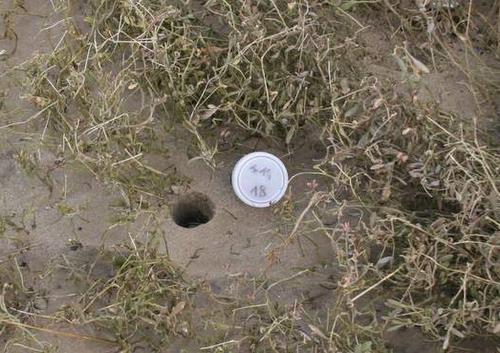Sampling Equipment
- bucket
- cups
- spoon
- long knife
- refractometer
- waterproof marker
- sampling site description sheet
- pencil
- camera
- GPS
- camera
- scoop
General Advice
Take Picture of every sample. It will make it a lot easier to locate the sample location in case you want to return. In order to identifiy the sample on the picture write the sample number clearly on the lid of the cup.
General Sand Sample

Transects

Pete Samples
A 'Pete Sample' as a long, thin surface sample covering a gradient of different substrates or habitats (the name is in honour of Peter Ladurner, who 'invented' that type of sample).

Scoop
To sample in between vegetation, especially in fresh water habitats, a scooping sampling device can be very helpfull to collect and concentrate the material. This one was built by Gregor Schulte out of a discarded detergent container found on the beach, a 30 µm mesh and a lid of a urine cup. It's really an indispensable collection tool.



Scooping was also very successfully used on a flooded meadows.
Building instructions will follow.
Core Sample

These kinds of acrylic tubes are useful to take core samples in a more standardised way.
Traps
Until still just an idea traps could be put out in the field and then collected afterwards. Any progress will be reported here.
